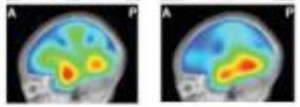Mothers and Strangers Voices: Impact on Newborns’ Brains
 Fetuses and newborns react preferentially to their mother’s voice. A recent study looked for the first time at what is going on in a newborn brain when hearing his mother’s voice and a stranger’s voice. Results showed that not only newborns process their mother’s voice more actively than that of a stranger but they also process it differently.
Fetuses and newborns react preferentially to their mother’s voice. A recent study looked for the first time at what is going on in a newborn brain when hearing his mother’s voice and a stranger’s voice. Results showed that not only newborns process their mother’s voice more actively than that of a stranger but they also process it differently.
Researchers looked at the brain activity in response to voices (mother and female stranger) in 16 newborn babies (mean age: 21 hours), by applying electrodes to their heads while they were sleeping. Both the mother and a female nurse (who had visited the mother several times before the birth) were asked to make the short ‘A’ vowel sound.
The mother’s voice processing initially activated the left posterior temporal lobe, an area particularly involved in language comprehension in the adult brain. When the stranger spoke, the right temporal lobe was activated, an area associated with voice recognition. Both voices subsequently activated a right motor region of the brain. This motor activity may reflect the imitative behavior observed in babies: When a baby hears the “B” sound for instance, he or she will make the mouth shapes needed to imitate this noise.
.
Above is shown newborns’ brain activity when hearing their mother’s voice, and then the nurse’s voice. In the top row of each panel you can see the brain from the back and in the bottom row, profile views of the brain. Strong activity is indicated by the color red. The activity is clearly on the left-side of the brain (language areas) when hearing the mother’s voice and mostly on the right side of the brain (voice recognition areas) when hearing the stranger’s voice. Credit: doi:10.1093/cercor/bhq242, Cerebral Cortex, Oxford University Press.
.
The pattern of brain activity observed confirms the idea that a mother’s voice acts as the primary initiator of language. This is not new you may think, but it is the first time that this was observed live inside a baby’s brain.
Note also that the study was conducted while the babies were sleeping. Sleeping babies are very active: They can process external information and learn… To keep in mind when we are around a sleeping infant!
Related posts:



